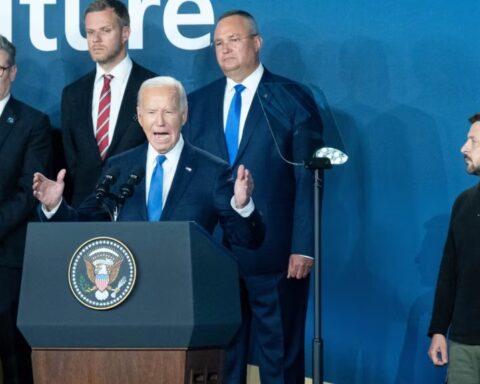The $30 million grant program will allow local governments to sell drug paraphernalia, but not to legalize crack as some critics have claimed
President Joe Biden has a plan to tackle America’s drug crisis, and not everyone likes it. In early February, the administration’s ‘Harm Reduction Plan’ made headlines as one of the several steps the Health and Human Services department (HHS) is taking, and with good reason. A quick read of the plan may seem like it is actually endorsing drug use, but the reality is not quite simple.
America’s drug epidemic is currently highlighted by fentanyl-laced drugs. In March 2020, police in Oneida County issued a warning that fentanyl-laced marijuana had made its way to New York state. Fentanyl-laced drugs are believed to be the reason for the death of rapper Mac Miller in 2018. In September 2021, comedian Kate Quigley was hospitalized after taking fentanyl-laced cocaine.
It’s unclear how the administration plans to tackle this particular issue, but its Harm Reduction Plan does put in place several steps to counter drug consumption overall. Here’s a look at what it is, and the common misconceptions about it.
What is the Harm Reduction Plan?
Overall, the plan is a series of policies and steps meant at “meeting individuals with addiction where they are” and weaning them off drugs, as well as limiting STDs. According to an HHS website, the current plan will provide funding for “a range of community harm reduction services.” The federal government has laid out $30 million, to be distributed over three years for these services that any state, local, tribal government, or nonprofit can apply for.
The plan is based on two key steps – one to reduce deaths, and two to increase education. The administration is also prioritizing minority communities in the plan, such as African-Americans, Native Americans, and LGBTQ+ communities. That decision is part of Joe Biden’s wider focus on ensuring racial equality under his administration.
It’s vital to remember that the grant covers a broad range of services, not just one. Some examples listed by the Substance Abuse and Mental Health Services Administration (SAMHSA) are “provision of sterile syringes, safe-sex kits, prevention education, overdose prevention kits, peer worker engagement, medical services, case management and referral to treatment. While most of these seem perfectly normal and rational, there appears to be some concern around the provision of syringes and smoking kits. Does it mean the government is actually endorsing drug use? Not really.
The truth about the plan
As part of the Harm Reduction Plan, SAMSHA is also allowing governments to provide smoking kits and supplies, which include pipes used to smoke crack cocaine and crystal methamphetamine. To be clear, the government is not supplying the drugs themselves, just the kits. If you are wondering why it is part of step one – to reduce deaths. A HHS spokesperson told The Washington Free Beacon that the kits would “reduce the risk of infection” from cuts and sores. It would also ensure drug users aren’t sharing equipment, which could further lead to disease spread and possible death. Furthermore, the use of pipes is expected to cut down on the use of needles and injections, which are known to be far riskier.
The controversial step is just one part of the government’s plan to address drug use. On February 7, the Department of Justice hinted it may allow “safe injection sites” to open up across the country, where drug users could consume drugs without being arrested, and being monitored by health professionals. Proponents have argued this is a vital step to limiting drug consumption and ensuring users are getting the help they need while preventing overdoses.
However, not everyone is happy about it. Senator Marsha Blackburn tweeted, “Drug paraphernalia out of vending machines. That’s Joe Biden’s plan to address drug abuse.” Others on social media joked about Hunter Biden, with conservative radio host Andrew Wilkow calling it “The Hunter plan…”
The truth is the plan aims to monitor and control drug use, reducing hospitalizations and deaths. It does not endorse drug use, because as countless studies have shown banning drugs and introducing harsh legal repercussions only increases illegal drug use, not decrease it.
meaww.com By Srivats Lakshman






